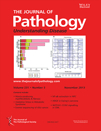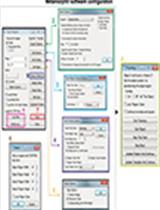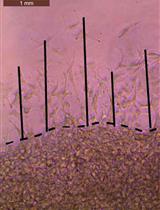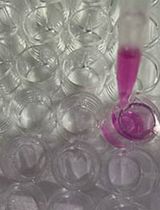- EN - English
- CN - 中文
Three Dimensional Spheroid Co-culture Invasion Assay
三维球状体共培养侵袭研究
发布: 2015年01月05日第5卷第1期 DOI: 10.21769/BioProtoc.1373 浏览次数: 13399
评审: Lin FangAnonymous reviewer(s)
Abstract
The assay was developed to investigate the impact of stromal cells of different types (in our case breast cancer associated fibroblasts stably manipulated to modify expression of genes of interest) on the invasive capacity of epithelial cancer cells (in our case breast cancer cell lines) (Verghese et al., 2013). Typical two dimensional invasion assays do necessarily account for the presence of extracellular matrix that is present around the stromal and tumour cells in vivo and therefore cellular behaviour within these cultures may be non-physiological. This spheroid assay was developed to attempt to replicate more closely the environment that is present around breast cancer stromal and tumour cells in actual tumours (Verghese et al., 2013). Extra cellular matrix composed of both collagen IV and collagen I is included and fibroblasts and epithelial cells are given the opportunity to develop “physiological” interactions (Verghese et al., 2013; Hooper et al., 2006). The method was developed from Nowicki et al. (2008), and we have published data using it in Verghese et al. (2013).
Materials and Reagents
- Epithelial cells and fibroblasts [see Verghese et al. (2013) for the type we have used, although many others may be applicable]
- Growth factor reduced matrigel (BD, catalogue number: 356231 )
- Collagen-1 (BD, catalog number: 354236 )
- Fetal calf serum (FCS) (Sigma-Aldrich, catalog number: F7524 )
- DMEM (Life Technologies, InvitrogenTM, catalog number: 31966 )
- MEM powder (Sigma-Aldrich, catalog number: M0268 )
- 1 M N-(2-Hydroxyethyl)piperazine-N′-(2-ethanesulfonic acid) (HEPES) (pH 7.5)
- NaHCO3
- Rabbit anti-cytokeratin (Abcam, catalog number: Ab9377 )
- Zymed antibody diluent (Life Technologies, catalog number: 003218 )
- DPX (Sigma-Aldrich, catalog number: 317616 ) (a mounting agent)
- Mayer’s haematoxylin (any supplier)
- Scott’s tap water substitute (any supplier)
- Eosin (any supplier)
- Formalin (any supplier)
- Ethanol (any supplier)
- Xylene (any supplier)
- Collagen-1/Matrigel mix (see Recipes)
- Collagen medium (see Recipes)
Equipment
- Tissue culture incubator (37 °C, humidified air/5% CO2) (Panasonic Corporation, Sanyo)
- 35 mm petri dish (ibidi GmbH, catalog number: 81158 )
- E1000 Eclipse microscope (Nikon Corporation)
- Superfrost Plus slides and cover slips (Menzel Glaser)
- Access retrieval unit (The Menarini Group) (a machine performing automated antigen retrieval giving enhanced reproducibility)
- Automated stainer (IntelliPATH) (a machine performing automated immunohistochemistry protocols giving enhanced reproducibility)
Software
- Photoshop (ADOBE)
Procedure
文章信息
版权信息
© 2015 The Authors; exclusive licensee Bio-protocol LLC.
如何引用
Verghese, E. T. and Hughes, T. A. (2015). Three Dimensional Spheroid Co-culture Invasion Assay. Bio-protocol 5(1): e1373. DOI: 10.21769/BioProtoc.1373.
分类
癌症生物学 > 侵袭和转移 > 细胞生物学试验 > 细胞侵袭
癌症生物学 > 通用技术 > 肿瘤微环境 > 细胞外基质
细胞生物学 > 细胞运动 > 细胞运动性
您对这篇实验方法有问题吗?
在此处发布您的问题,我们将邀请本文作者来回答。同时,我们会将您的问题发布到Bio-protocol Exchange,以便寻求社区成员的帮助。
提问指南
+ 问题描述
写下详细的问题描述,包括所有有助于他人回答您问题的信息(例如实验过程、条件和相关图像等)。
Share
Bluesky
X
Copy link












